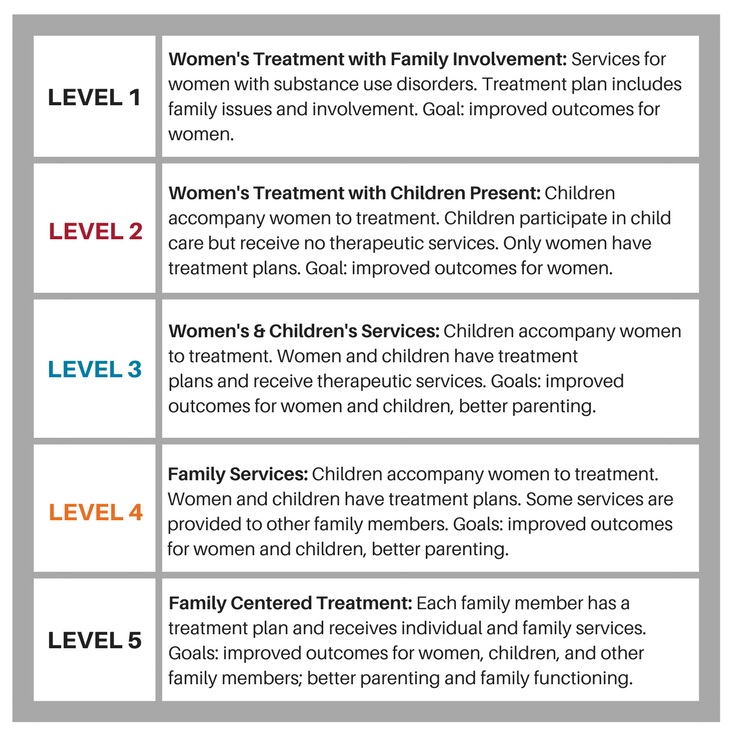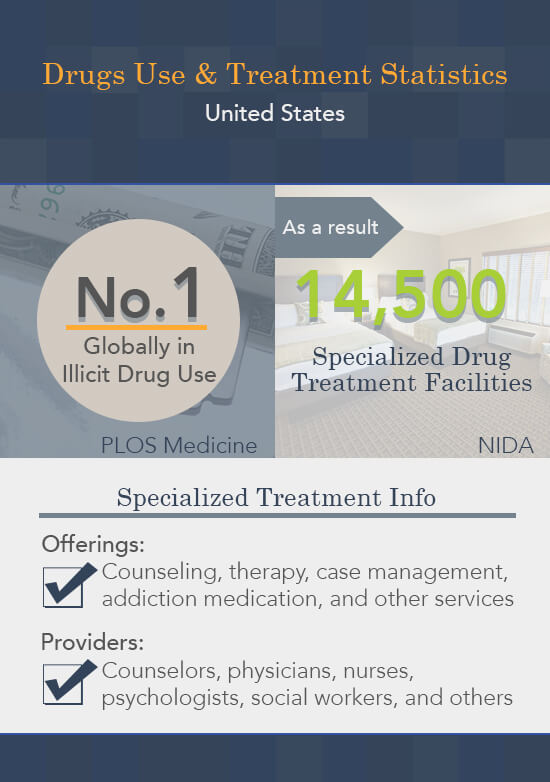At standard inpatient treatment facilities, the rooms are often standard, with a comfy bed, a bathroom, and space for personal products. Expenses may be lower at these facilities if the client is ready to share a http://garrettrnva668.trexgame.net/how-to-prevent-drug-addiction-for-dummies space. There might likewise be access to a swimming pool or an on-site health club, although that is not ensured.
Beyond standard treatment options, there are also high-end and executive centers. These centers tend to be in beautiful areas and can use upscale features and Drug Detox servicesincluding acupuncture, horse therapy, day spa treatments, and morein addition to the treatments typical at all rehabilitation centers. There is more to a compound use disorder than drug use.
Discover more about who responds to and what to expect. Routine therapy sessions post-rehab, both specific and group therapy, can assist clients remain liable to their sobriety on their path toward healing. Even after patients have actually finished their initial rehab program, they are not ended up with healing workin truth, healing is a long-lasting process.

Developing a strong strategy of aftercare is very important, however the individual components of aftercare might vary from a single person to the next. Many dependency rehab facilities host their own follow-up programs to assist patients as they go back to their daily lives. Such aftercare programs may consist of additional therapy, conferences, and classes for alumni of the treatment program along with other individuals in the community.
Many dependency rehabilitation facilities use follow-up programs to assist patients as they go back to their day-to-day lives. Numerous patients maintain regular therapy sessions post-rehab, and some submit to arranged drug screening as a way to keep them responsible to their sobriety. Regular group therapy presence is a fantastic method for constructing a support group in your regional location.
Not known Facts About How To Recover From Drug Addiction
Healing is a long-lasting procedure. Are you all set to start on your course towards sobriety? Call our customer service at for support. Find out more about who responds to and what to anticipate. National Institute on Substance Abuse. (2018 ). Principles of Drug Addiction Treatment: A Research-Based Guide (Third Edition): Kinds Of Treatment Programs.
( 2019 ). National Institute on Drug Abuse. (2018 ). National Institute on Substance Abuse. (2018 ). Principles of Drug Dependency Treatment: A Research-Based Guide (Third Edition): Principles of Effective Treatment. National Institute on Substance Abuse. (2018 ). Principles of Drug Dependency Treatment: A Research-Based Rehab Center Guide (Third Edition): Is making use of medications like methadone and buprenorphine simply replacing one dependency with another? National Institute on Drug Abuse.
Procedures of treatment for drug reliance Drug rehabilitation is the procedure of medical or psychotherapeutic treatment for dependence on psychoactive compounds such as alcohol, prescription drugs, and street drugs such as cannabis, cocaine, heroin or amphetamines. The general intent is to make it possible for the patient to confront substance dependence, if present, and cease compound abuse to prevent the psychological, legal, financial, social, and physical consequences that can be caused, particularly by extreme abuse.
Psychological dependence is addressed in lots of drug rehab programs by attempting to teach the person new approaches of interacting in a drug-free environment. In specific, patients are typically motivated, or perhaps even needed, to not associate with peers who still use the addictive compound. Twelve-step programs encourage addicts not only to stop using alcohol or other drugs, however to analyze and change habits connected to their dependencies.
For legal drugs such as alcohol, total abstentionrather than attempts at small amounts, which may result in regressionis also highlighted (" One is too numerous, and a thousand is never ever enough.") Whether moderation is achievable by those with a history of abuse remains a questionable point (what is a drug addiction). The brain's chemical structure is affected by drugs of abuse and these changes are present long after an individual stops using.
An Unbiased View of Why Does Drug Addiction Occur

Different kinds of programs offer aid in drug rehabilitation, including: residential treatment (in-patient/out-patient), regional support system, extended care centers, recovery or sober houses, addiction counselling, mental health, and medical care. Some rehab focuses deal age- and gender-specific programs. In an American study of treatment service providers from three different institutions (the National Association of Alcoholism and Substance Abuse Therapists, Rational Recovery Systems and the Society of Psychologists in Addicting Habits) determining the treatment provider's responses on the Spiritual Belief Scale (a scale measuring belief in the four spiritual attributes Twelve step programs identified by Ernest Kurtz); ball games were found to discuss 41% of the difference in the treatment provider's responses on the Addiction Belief Scale (a scale determining adherence to the illness design or the free-will model addiction).
The National Institute on Drug Abuse (NIDA) advises detoxing followed by both medication (where applicable) and behavioral treatment, followed by regression prevention. According to NIDA, efficient treatment must resolve medical and psychological health services along with follow-up alternatives, such as neighborhood or family-based recovery support group. Whatever the approach, client motivation is an important consider treatment success.
Medication like methadone and buprenorphine can be used to deal with dependency to prescription opiates, and behavior modifications can be used to deal with dependency to prescription stimulants, benzodiazepines, and other drugs. Kinds of behavior modification include: Cognitive-behavioral therapy, which seeks to assist patients to acknowledge, prevent and deal with situations in which they are probably to relapse.
Motivational speaking with, which is designed to increase patient inspiration to alter behavior and go into treatment. Motivational rewards, which utilizes favorable reinforcement to motivate abstaining from the addicting compound. EEG Biofeedback augmented treatment enhances abstinence rates of 12-step, faith-based and medically assisted dependency for drug, methamphetamine, alcohol addiction and opioid dependencies. Treatment can be a long process and the duration is dependent upon the client's requirements and history of abuse.
Specific opioid medications such as methadone and more buprenorphine are commonly utilized to treat addiction and reliance on other opioids such as heroin, morphine or oxycodone. Methadone and buprenorphine are maintenance therapies planned to lower cravings for opiates, therefore minimizing unlawful drug use, and the threats related to it, such as disease, arrest, imprisonment, and death, in line with the viewpoint of harm decrease.
5 Simple Techniques For Which Substitute Drug Is Used In Heroin Addiction Treatment Programs?
All readily available research studies gathered in the 2005 Australian National Examination of Pharmacotherapies for Opioid Dependence recommend that upkeep treatment is preferable, with very high rates (79100%) of relapse within 3 months of cleansing from levo-- acetylmethadol (LAAM), buprenorphine, and methadone. According to the National Institute on Substance Abuse (NIDA), clients stabilized on sufficient, sustained dosages of methadone or buprenorphine can keep their jobs, prevent criminal activity and violence, and minimize their exposure to HIV and Liver Disease C by stopping or minimizing injection drug use and drug-related high risk sexual behavior.
It is normally recommended in outpatient medical conditions. Naltrexone obstructs the euphoric impacts of alcohol and opiates. Naltrexone cuts regression risk in the very first three months by about 36%. Nevertheless, it is far less efficient in assisting clients keep abstaining or maintaining them in the drug-treatment system (retention rates typical 12% at 90 days for naltrexone, typical 57% at 90 days for buprenorphine, typical 61% at 90 days for methadone).